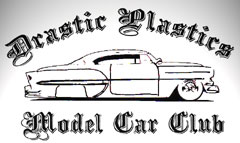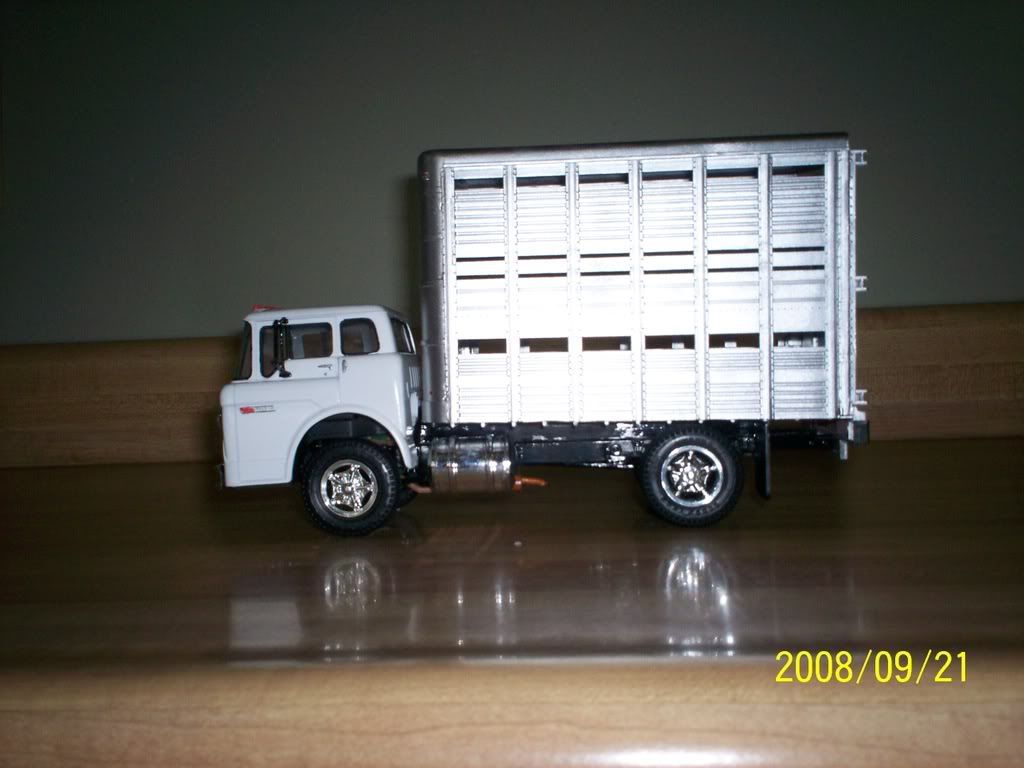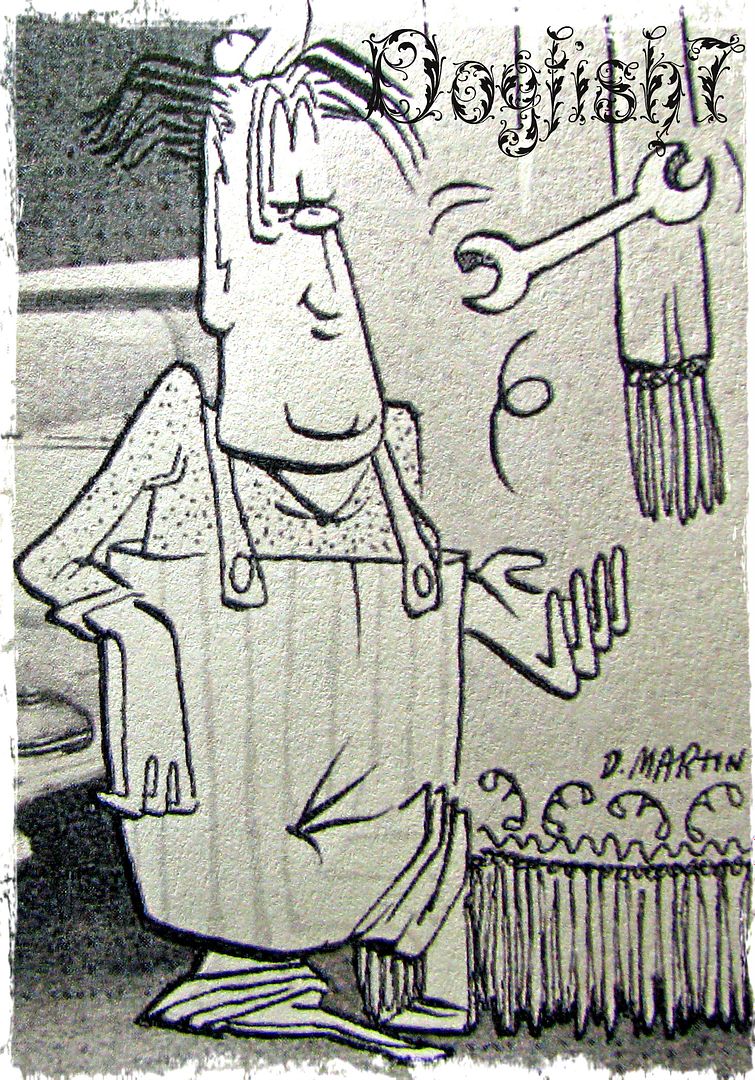Post by Bernard Kron on Jan 20, 2014 23:08:20 GMT -5
I posted this over on TRaK, but I know there are many DPMCC members who don't frequent TRaK much so I thought I'd post this here as well. Apologies to any who have seen this elsewhere.
This is a project I’ve started for a CPB on the Vintage Drag Racing forum based on a Little Pages theme. Alongside this project I was working on an AMT chopped ’36 Ford 3-window which wasn’t TRaKable so haven’t shown anything for a while here. Inspiration for this project came from the current issue of TRJ which features the Murray & Waters Triple Nickel, one of the most iconic early drag cars to grace the quarter mile. Ultra-light and very sophisticated for its time it was virtually unbeatable in its class. I’m no replica builder so I generally use an historic machine as inspiration for my own take on these cars. That will be the case here.
The thing that I’ve always liked about this car is that, as nicely finished and turned out as it is, it still shows its track roadster roots. It has a certain primitive funk that, as an example, Tony Nancy’s two 22 Jr. A roadsters lack. I think the key is that Murray & Waters chose to use a Model A frame instead of the ’32 rails that most people ran. At first it was because they were cheap and plentiful, but then they realized that properly set up they could make the car exceptionally light and yet rigid. One trademark of their A-bone frames right from the start is that they removed the stock front cross member and ran a tubular member in front of the grill. This lengthened the wheelbase, effectively setting the motor back in even their earliest car, and saved weight and added rigidity at the same time. I’ll be doing the same thing on this car.
I’ll be borrowing other visual cues from the Triple Nickel, such as the roll hoop, the tubular inner structure, the tonneau cover and the flat aluminum sheet wheel covers. Also, like the 555 car, my machine will have early small block Chevy power. And of course, I’m resisting the temptation to use a Deuce grill, which would destroy the entire point of the exercise.
To get started I tackled the signature bits to make sure I could do them. I set up the tonneau cover to be removable to show off the interior. The hood and grille shell will be a single removable piece but the grille shell will remain chromed. Below are pictures of the second and third Murray & Waters cars and a summary photo of what I’ve got so far. My car will sit more like the second version of their car since I’m not running a narrowed chassis and torsion bar rear suspension like the Triple Nickel had.
The second Murray & Waters roadster which became the first 555 car.

The Triple Nickel car as it stands today as featured in the current TRJ. This was the third car the team built.

I started by finding some wheels in my stash that I knew would fit the tires I was going to use (Modelhaus T110B's at the front, and Firestone directional 7" pie crust slicks from Ma's Resin at the back). Since they would totally disappear behind the covers I could use anything of appropriate width and diameter. So I found some billet-ish mags from an AMT '36 Ford kit that I knew for sure I would never use otherwise and stripped them of their chrome.
The front wheels required more work because I had to make the little covers for the axle ends, so I'll describe the steps for those.
First off I cut some circular covers of the same diameter as the donor wheels out of .010" styrene sheet. At the front I started by drilling a hole through the center of the wheel. I used 1/8" styrene rod to make the axle end caps. I countersunk the hole I had drilled to fit the "cap" so that the proper amount of rod stuck out, then glued the rod in place. For the back side covers, I drilled a 1/4" hole to accept the post for the wheel mount. For the rears all I did was cover them, and add some Monogram '40 Ford style brake backing plates. Then I finished everything in Testors Metalizer Aluminum plate
Here are the wheel sub-assemblies before finishing.

Next up was the frame. Starting with an AMT ’29 Ford Roadster kit which contributed the body, hood, grill shell, rear spring and front axle, I cut off the frame horns just in front of the grill shell and installed a tubular cross member and fabricated a suicide axle mount from styrene stock. The front axle uses cut down brake backing plates to model the axle bearing housings on the 1:1.
Here’s an early picture of the frame before the roll hoop braces were added. The short block is a Revell Parts Pac 283 Chevy which will have Hilborn injectors. The center cross member came from the AMT Ala Kart frame and the front engine mount is the piece from the Parts Pac.

This is a composite picture showing the status of the build just before starting the paint process. You can see the additional bracing for the roll hoop. The roll hoop itself is made from polished aluminum tubing to simulate chrome, and will be removable so that the completed chassis can be displayed separate from the body.

This is the body in basic paint. Colors are Tamiya TS-31 Bright Orange and Duplicolor Wimbledon White. The radiator is in place only for mock-up purposes and will be replaced by either of two schemes: a) a plain panel finished in one of the body colors with some sort of graphics, or b) a transparent orange plexiglas panel. The bottom of the radiator shell has been removed to clear the front cross member.

I'm currently working on the inside tinwork and drive train so I can get the car up on its wheels to take some properly proportioned pictures to design decals for it.
Thanx for lookin’,
B.
This is a project I’ve started for a CPB on the Vintage Drag Racing forum based on a Little Pages theme. Alongside this project I was working on an AMT chopped ’36 Ford 3-window which wasn’t TRaKable so haven’t shown anything for a while here. Inspiration for this project came from the current issue of TRJ which features the Murray & Waters Triple Nickel, one of the most iconic early drag cars to grace the quarter mile. Ultra-light and very sophisticated for its time it was virtually unbeatable in its class. I’m no replica builder so I generally use an historic machine as inspiration for my own take on these cars. That will be the case here.
The thing that I’ve always liked about this car is that, as nicely finished and turned out as it is, it still shows its track roadster roots. It has a certain primitive funk that, as an example, Tony Nancy’s two 22 Jr. A roadsters lack. I think the key is that Murray & Waters chose to use a Model A frame instead of the ’32 rails that most people ran. At first it was because they were cheap and plentiful, but then they realized that properly set up they could make the car exceptionally light and yet rigid. One trademark of their A-bone frames right from the start is that they removed the stock front cross member and ran a tubular member in front of the grill. This lengthened the wheelbase, effectively setting the motor back in even their earliest car, and saved weight and added rigidity at the same time. I’ll be doing the same thing on this car.
I’ll be borrowing other visual cues from the Triple Nickel, such as the roll hoop, the tubular inner structure, the tonneau cover and the flat aluminum sheet wheel covers. Also, like the 555 car, my machine will have early small block Chevy power. And of course, I’m resisting the temptation to use a Deuce grill, which would destroy the entire point of the exercise.
To get started I tackled the signature bits to make sure I could do them. I set up the tonneau cover to be removable to show off the interior. The hood and grille shell will be a single removable piece but the grille shell will remain chromed. Below are pictures of the second and third Murray & Waters cars and a summary photo of what I’ve got so far. My car will sit more like the second version of their car since I’m not running a narrowed chassis and torsion bar rear suspension like the Triple Nickel had.
The second Murray & Waters roadster which became the first 555 car.
The Triple Nickel car as it stands today as featured in the current TRJ. This was the third car the team built.

I started by finding some wheels in my stash that I knew would fit the tires I was going to use (Modelhaus T110B's at the front, and Firestone directional 7" pie crust slicks from Ma's Resin at the back). Since they would totally disappear behind the covers I could use anything of appropriate width and diameter. So I found some billet-ish mags from an AMT '36 Ford kit that I knew for sure I would never use otherwise and stripped them of their chrome.
The front wheels required more work because I had to make the little covers for the axle ends, so I'll describe the steps for those.
First off I cut some circular covers of the same diameter as the donor wheels out of .010" styrene sheet. At the front I started by drilling a hole through the center of the wheel. I used 1/8" styrene rod to make the axle end caps. I countersunk the hole I had drilled to fit the "cap" so that the proper amount of rod stuck out, then glued the rod in place. For the back side covers, I drilled a 1/4" hole to accept the post for the wheel mount. For the rears all I did was cover them, and add some Monogram '40 Ford style brake backing plates. Then I finished everything in Testors Metalizer Aluminum plate
Here are the wheel sub-assemblies before finishing.

Next up was the frame. Starting with an AMT ’29 Ford Roadster kit which contributed the body, hood, grill shell, rear spring and front axle, I cut off the frame horns just in front of the grill shell and installed a tubular cross member and fabricated a suicide axle mount from styrene stock. The front axle uses cut down brake backing plates to model the axle bearing housings on the 1:1.
Here’s an early picture of the frame before the roll hoop braces were added. The short block is a Revell Parts Pac 283 Chevy which will have Hilborn injectors. The center cross member came from the AMT Ala Kart frame and the front engine mount is the piece from the Parts Pac.

This is a composite picture showing the status of the build just before starting the paint process. You can see the additional bracing for the roll hoop. The roll hoop itself is made from polished aluminum tubing to simulate chrome, and will be removable so that the completed chassis can be displayed separate from the body.

This is the body in basic paint. Colors are Tamiya TS-31 Bright Orange and Duplicolor Wimbledon White. The radiator is in place only for mock-up purposes and will be replaced by either of two schemes: a) a plain panel finished in one of the body colors with some sort of graphics, or b) a transparent orange plexiglas panel. The bottom of the radiator shell has been removed to clear the front cross member.

I'm currently working on the inside tinwork and drive train so I can get the car up on its wheels to take some properly proportioned pictures to design decals for it.
Thanx for lookin’,
B.














 It's an interweb thing.....
It's an interweb thing.....